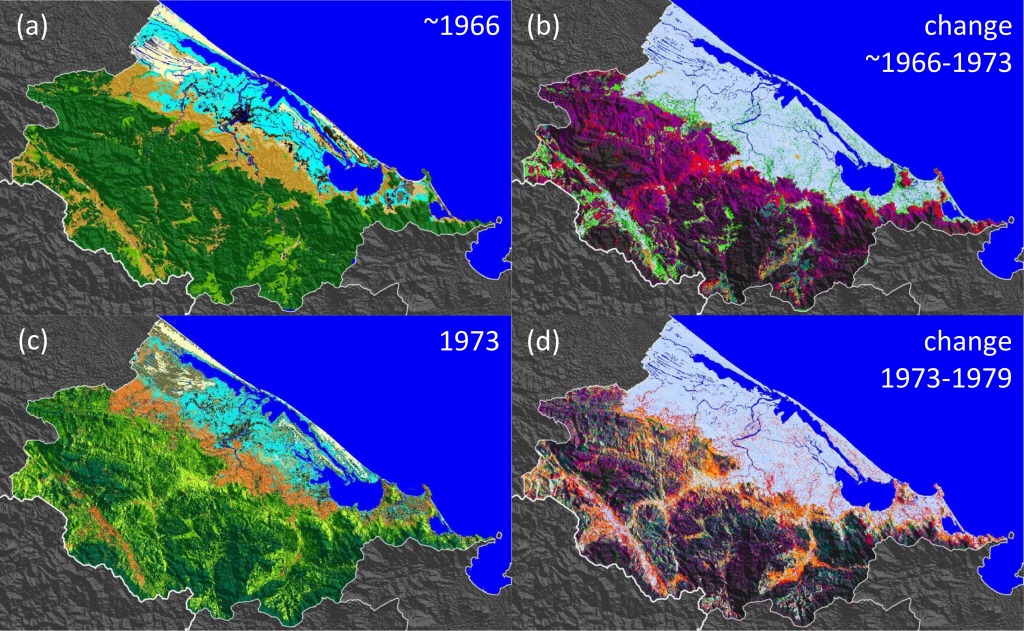
The FT Viet project’s new paper in the journal Land Use Policy is a major contribution both to studies of “forest transitions” (the idea that as places develop over time, forest loss switches to forest regrowth) and to the specific history of forest dynamics in central Vietnam’s Thừa Thiên-Huế province. Led by Roland Cochard, with remote sensing whizzery contributed by Mathieu Gravey and colleagues, this paper is a very rich and careful historical analysis of fifty years of forest change based on remote sensing and documentary sources.
Methodologically, the paper provides the most reliable and detailed high resolution land cover change mapping of Thừa Thiên-Huế province yet made, with seven time points from 1966 to 2019 and twenty different land use classes. This builds on innovative remote sensing methods that allow us to build comparable maps from recent Sentinel-2 satellite images, diverse Landsat images, and US Army maps. The maps and change analyses are accompanied by a detailed and impeccably documented historical narrative.
The paper allows us to problematise the fashionable academic concept of ́’forest transition’, which is
often misunderstood. We reconfirm that the overall increase in forest cover is the result of exotic mono-specific short rotation acacia tree plantations, rather than of regrowth/expansion of natural forest. In addition, we provide a nuanced and spatially explicit accounting of the causes of forest change. We show that forest destruction has hardly been due to poor forest management by local people (as policymakers often assert) but indeed due to modern machinery – the violent impact of war and post-war industrial timber logging. However, the logging – which was selective – corresponded with an incipient period of transition with increasing lower-biomass forests. Deforestation and reforestation occurred in steps, and may be better characterised as a increasing bifurcation from natural forests previously managed through traditional swidden uses to either zones of plantations grown for economic exploitation or zones of mixed degrading and regenerating secondary rainforests. All of these changes have been accompanied by significant levels of socio-political and territorial restructuring. These findings open the question of the ‘sustainability’ of such forest transitions.
Congratulations to the whole paper team!
The paper is here (don’t miss the Supplemental material too!): Cochard, Roland, Mathieu Gravey, Luiz Gustavo Rasera, Grégoire Mariethoz & Christian A. Kull (2023) The nature of a ‘forest transition’ in Thừa Thiên Huế Province, Central Vietnam – A study of land cover changes over five decades. Land Use Policy 134:106887.
The data is here: Cochard, Roland, Mathieu Gravey, Luiz Gustavo Rasera, Grégoire Mariethoz & Christian A. Kull. 2023. Database of a study on long-term land cover changes in Thừa Thien Huế Province, Central Vietnam, Zenodo.
